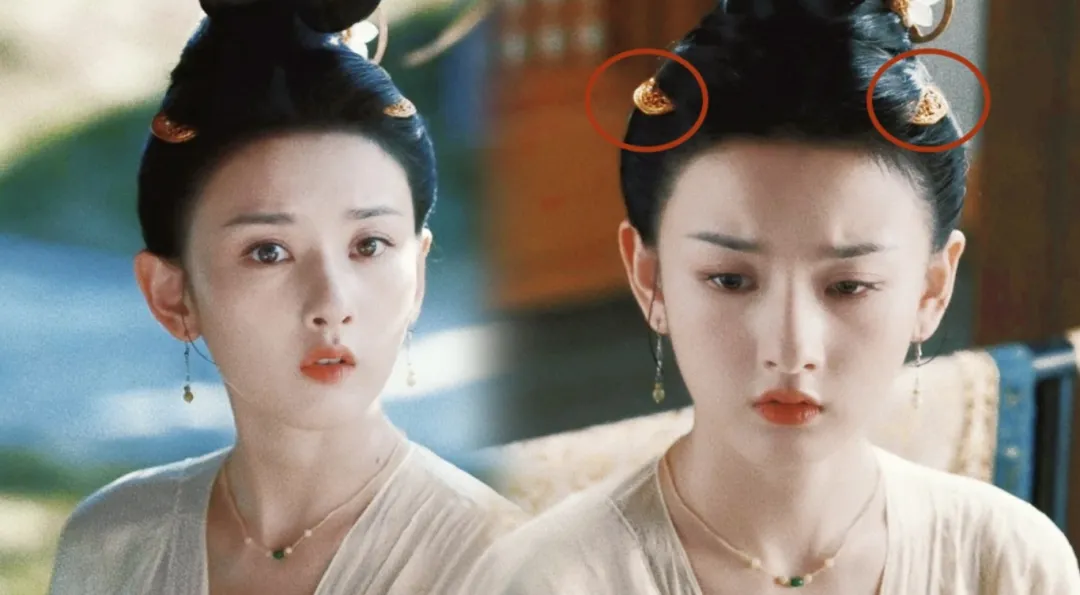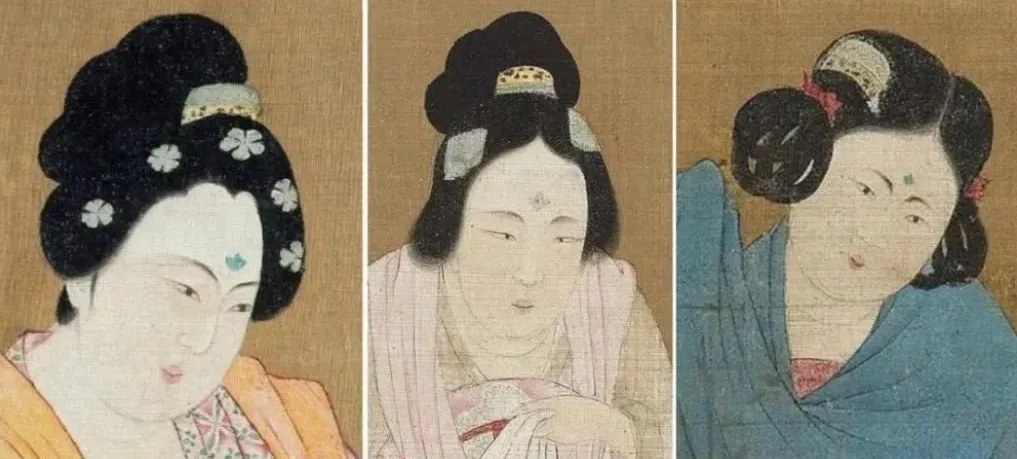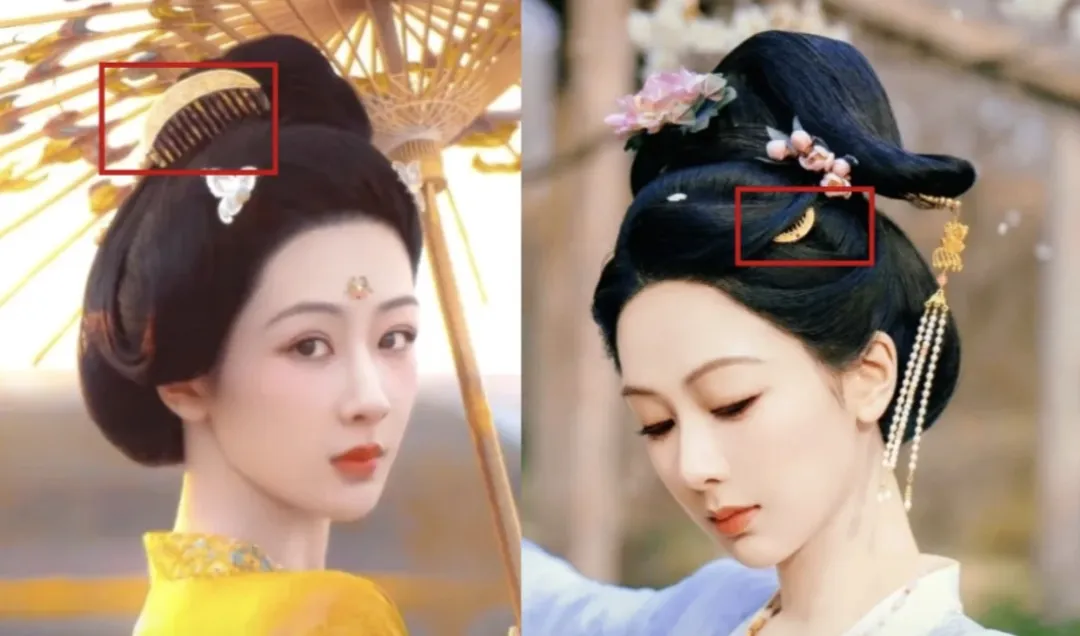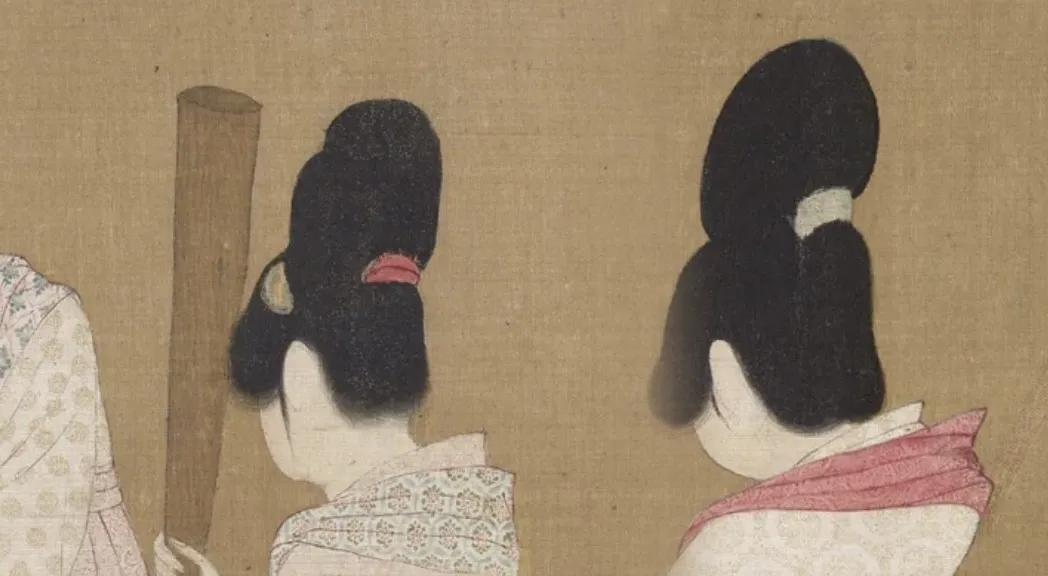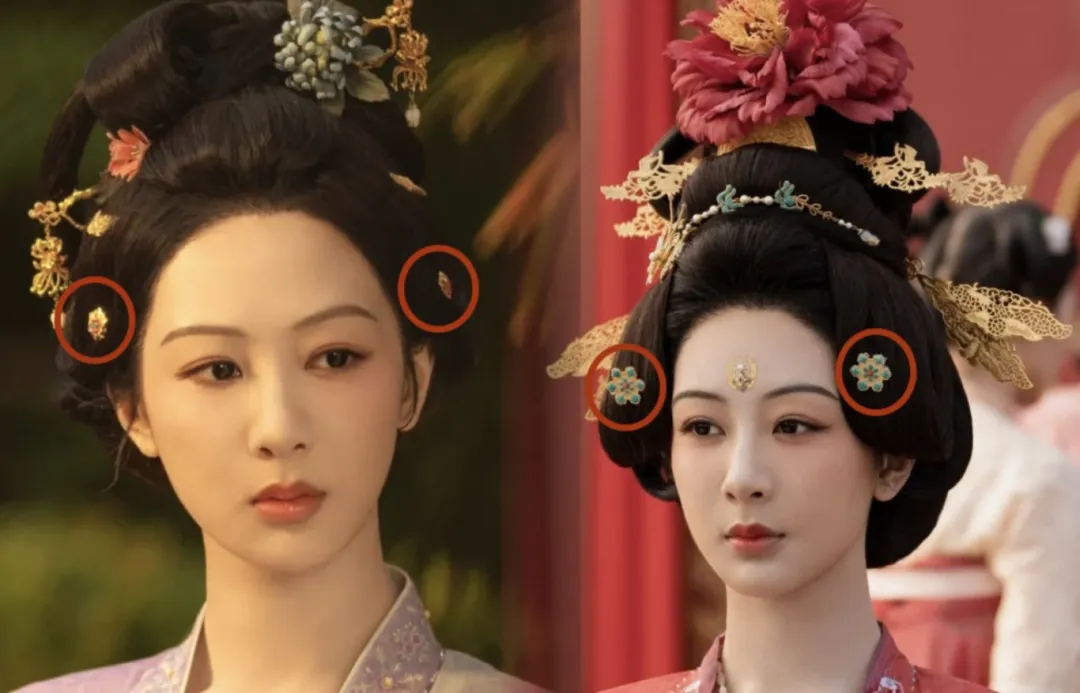In the ancient costume drama No Worries Ferry, Zuer Song's Tang Dynasty-style bun appears simple yet elegant. The hair accessories on her temples, not overly exaggerated, perfectly complement her facial features. So, what exactly are these hair accessories called? Well, they are decorative hair ornaments. Initially, combs, Bi (篦), and Huadian (花钿) were worn on the temples, and later, specialized accessories like Lianshu (帘梳) and Yanbin (掩鬓) emerged. This way of wearing them helps fill the decorative gaps in the bun, adding layers and visually elevating the crown of the head while enhancing facial contours.
Let's start with combs. This comb - wearing method has a long history, dating back to the Han and Jin Dynasties as decorative items, categorized into wide - toothed combs and fine - toothed Bi. It reached its peak of popularity during the Tang and Song Dynasties. In the mid - to - late Tang Dynasty, with the improvement of living conditions, women became more inclined to adorn themselves. They would style elaborate, tall buns and wear various hair accessories. Combs, like jade pendants, were symbols of social status. The higher one's status, the more exquisite and luxurious the combs were. Ancient combs, as hair ornaments, were crafted with increasing sophistication. They were mainly made of gold, silver, and copper, and decorated with techniques such as hammering, engraving, inlaying, filigree, and gilding on the comb backs, which were carved with various auspicious patterns.
The ways of wearing combs are diverse. Some people like to wear one comb, while others prefer multiple combs, and some even adorn their heads with numerous small combs. Some also pair combs with other jewelry, like hairpins or flowers, to showcase their personal style.
Top Insertion
Women with high buns would place a comb vertically or horizontally at the crown. The decorated back of the comb is exposed, serving as a headpiece.
Side Insertion
Combs are inserted diagonally on the temples. One comb can be worn alone, or symmetrically on both sides, similar to the later Yanbin.
Back Insertion
A comb is placed at the back of the bun, as seen in Court Ladies Preparing Newly Woven Silk and Lady Playing the Zither and Sipping Tea. This style is still practiced in some ethnic regions today. Lu You noted in Diary of a Journey to Shu: 'Unmarried women often wear a Tongxinji (同心髻), two feet high, adorned with up to six silver hairpins and a large ivory comb at the back.'
Paired Insertion
Popular after the mid - Tang Dynasty, this involves wearing two large combs in the bun with teeth facing each other, visually lifting the crown.
Full - Head Combs
Multiple small combs can be worn simultaneously. However, the true 'full - head' style reached its peak in the late Tang and Five Dynasties. At that time, the number of combs increased dramatically, and some women covered their entire heads with combs. Wen Tingyun described in Buddhist Dancers: 'Overlapping golden combs glimmer like small hills,' depicting women's gold combs shimmering in sunlight.
Huadian, often in small floral or geometric shapes, adorn the sides of the bun or surround it. These are attached with hairpin stems for easy insertion. Forehead or cheek Huadian are typically glued with fish bladder adhesive. By the Song Dynasty, comb decorations evolved with added pearls or beaded curtains, while buns became less elaborate, thus reducing the use of Huadian. According to Dreams of Splendor of the Eastern Capital, during Emperor Renzong's reign, women in the capital wore white horn combs over a foot long, some even three feet. Song Dynasty Lianshu featured hanging pearls or gold ornaments, with a more flexible design.
In the Ming Dynasty, Yanbin hairpins became part of headwear. As described in Miscellaneous Notes from the Guest's Seat: 'Yanbin, shaped like clouds or floral clusters, are worn on the temples,' serving the same visual function as earlier temple combs. Clearly, ancient people were very dedicated to achieving high crowns and flattering facial contours.
